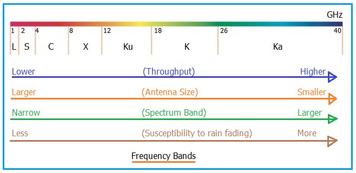
Radar Range Calculator: Determine Target Distance
Calculate radar range using the radar range equation. Determine target distance based on received power, transmit power, and antenna characteristics.
Showing 20 posts (Page 3 of 4)
Advertisement

Calculate radar range using the radar range equation. Determine target distance based on received power, transmit power, and antenna characteristics.

Calculate the radar range resolution based on pulse width. Understand how pulse width affects the ability to distinguish between targets.

Learn about radar range resolution, PRF, and radar range, including formulas, calculations, and concepts for optimizing radar performance.

Calculate Radar Cross Section (RCS) for a spherical target using the RCS formula. Enter the target radius to find the RCS value.

Explore the benefits and drawbacks of radar speed signs, including enhanced safety, ease of installation, and real-time feedback, alongside limitations like cost and detection range.

Explore different types of radar systems, including pulse, CW, Doppler, SAR, and more. Understand their applications in defense, weather monitoring, and navigation.

Calculate the radar target gain factor using RCS and frequency. Understand the formula behind the calculation.
Explore radar target simulators: devices mimicking radar signatures for testing, calibration, and training. Learn about their functions, features, applications, and advantages.
Learn essential radar terminology, including frequency, phase, bandwidth, pulse width, PRF, PRT, duty factor, beam width, and radar reflectivity.

Calculate vehicle speed using radar technology with this tool. Based on the Doppler effect, it's used in radar guns and speed signs.

Explore the distinctions between radar and PIR motion sensors, including their technologies, detection ranges, advantages, and disadvantages for various applications.
Explore the pros and cons of radar systems, including visibility through obstacles, target parameter identification, resolution limitations, and detection challenges.

Calculate the ideal radome thickness based on frequency and material properties. Learn about radome function and applications.

Explore the S band frequency range (2-4 GHz), its applications in radar and satellite communication, and its advantages and disadvantages.

Explore the differences between search radar and tracking radar systems, their unique characteristics, and applications. Understand radar fundamentals.

Explore the differences between semi-active, passive, and active radar homing missile systems, including their features and examples.

Explore the benefits and drawbacks of shared aperture antennas, which integrate multiple antenna functionalities into a single aperture, reducing costs and improving efficiency.

Explore the differences between slat and tile array antennas, their advantages, disadvantages, and applications in AESA radar systems.

Comparison of soft and hard tube modulators, covering their components, operation, and features. Learn about PFN, switching mechanisms, and pulse control.

Learn the fundamentals of Software Defined Radar (SDR), including its architecture, key components, and advantages for rapid prototyping and wideband signal analysis.
Advertisement